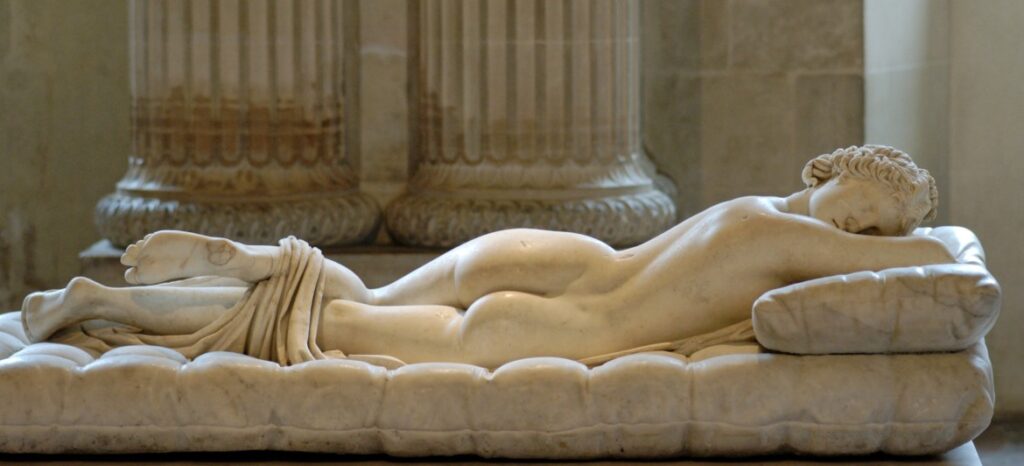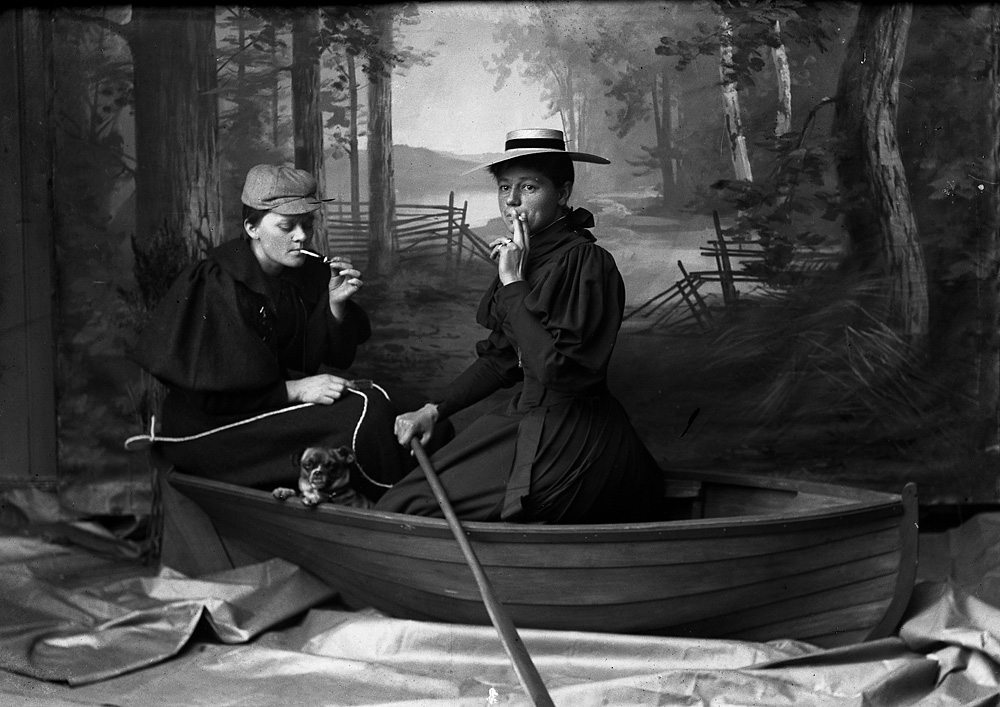Queer art has a long history. Here are some prominent examples of how LGBTQ+ was depicted in art throughout history.
Although artwork has focused on being more inclusive in recent history, LGBTQ+ depictions have been around for a while.
We encourage you to learn more about various depictions of LGBTQ+ in paintings, photos, and other art throughout history. It is truly impressive how queer culture thrived throughout art history, suppressed though the community may have been.
Sleeping Hermaphroditus

Hermaphroditus is known in mythology as the son of Aphrodite and Hermes, and as the god of hermaphrodites. Having both female and male features, Hermaphroditus is among the earlier works of art that depict a different view of gender than the binary male and female concepts of gender.
Sleeping Hermaphroditus refers to a marble sculpture from ancient times that was placed on a mattress sculpted later on in 1620.
This sculpture, which shows Hermaphroditus lounging, is based on ancient depictions of a feminized male Dionysus or Bacchus and female Venus. Sleeping Hermaphroditus has been on display at the Louvre in Paris for years.
Achilles and Patroclus

Achilles and Patroclus are some of the more famous examples of same-sex attraction in the ancient world. Although they’re described as having a close relationship in Homer’s Iliad, this affection isn’t explicitly romantic.
However, Achilles and Patroclus were depicted as lovers in other works of art from ancient Greece, including literature written by Plato, Aeschylus, Aeschines, and Pindar. For example, Plato’s Symposium describes the two as lovers who have divine approval.
While later portrayals treated the two more like close friends, they still appear as lovers in some works, including William Shakespeare’s Troilus and Cressida. Several paintings and sculptures also show the close relationship and affection between the two, such as Gavin Hamilton’s painting Achilles Lamenting the Death of Patroclus.
Marie Hoeg

Marie Hoeg was a noted photographer from Norway who experimented with traditional concepts of gender and gender roles through her art.
Hoeg and her partner, Bolette Berg, took several series of photos showing them wearing men’s clothing and engaging in activities usually associated with men at the time, such as smoking. In some photos, the two are also wearing mustaches.
The negatives for these private photos, which were taken in the early 1900s, weren’t found until a few decades after Hoeg’s death. During her lifetime, Hoeg challenged gender roles in other ways, including using her studio as a gathering place for other women who wanted to learn about and work toward women’s suffrage and feminism in general.
The Sorcerer of Hiva Oa (Marquesan Man in the Red Cape)

Paul Gauguin’s 1902 painting The Sorcerer of Hiva Oa (Marquesan Man in the Red Cape) was inspired by trips he took to the Polynesian Islands.
The painting is known for depicting a non-binary Mahu individual who has physical aspects of male and female presentation. Gauguin’s description of a Marquesan Man was based on his own traditional understanding of gender in the western world.
The subject of the painting does not fit into binary male/female concepts of gender. The description of the subject as a sorcerer comes from the spiritual aspects of Mahu individuals as healers.
The Warrior Lovers Harmodius and Aristogeiton
Harmodius and Aristogeiton are male warriors and lovers who were noted for paving the way for the Athenian concept of democracy.
A sculpture depicting the gay Athenian warrior lovers was the very first upright statue set up in a city plaza and the first statue that paid tribute in public to mortal heroes rather than god-like or divine heroes.
In the statue, Aristogeiton leans forward, holding out a cloak for Harmodius, showing a protective and devoted attitude toward his lover.

Queer art has always been a part of art history. Some artists had to employ coded language to avoid stigma and bias from the public, but still allow the LGBTQ+ community to appreciate it until art historians discovered and revealed the “hidden message.”
If you are interested in exploring art history in general, the School of Art History at Academy of Art University has a comprehensive art history programs that will lead you to discover a new world from the past. The Academy offers both onsite and online programs that provide you with the skills and knowledge you’ll need for a successful career in the art history field. Request information from our admissions specialists or send in your applications today for our fall semester.
Hero image courtesy of Jastrow via Wikipedia
Academy of Art University